-
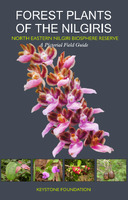 Forest Plants of the Nilgiris- North eastern Nilgiri Biosphere Reserve
Forest Plants of the Nilgiris- North eastern Nilgiri Biosphere Reserve The North Eastern part of the Nilgiri Biosphere Reserve(NBR), has a wide variation of flora ranging from the dry decides, riparian forest and grassland. the fourth in a part of series, this field guide covers the dominant plants of this zone.
-
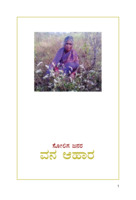 Wild food Kanada Book_Sholiga janavana aahara
Wild food Kanada Book_Sholiga janavana aahara This booklet, fourth in the series, documents the indigenous knowledge of the sholiga communities in the Nilgiri Biosphere Reserve. This book is about food from the forest.
-
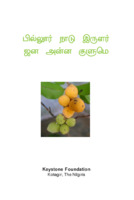 Irula Wild food-pillur book final with Index
Irula Wild food-pillur book final with Index This booklet, the third in the series , documents the indigenous knowledge of communities in the Nilgiri Biosphere Reserve. The current publication contains the wild food plants of the Irula of the Pillur region.
-
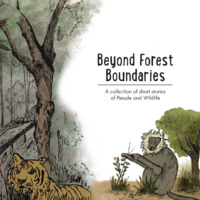 Beyond forest boundaries_final version_nov2021
Beyond forest boundaries_final version_nov2021 The document presents a series of narratives about human encounters with wildlife in a village setting. It recounts various incidents, such as a family dealing with a sloth bear that intrudes into their home, a girl encountering gaurs while heading to a temple, and a community's fascination with a rare black monkey known as the Nilgiri Langur. Other stories include a woman facing wild boars attracted by garbage, a man rescuing an injured leopard, and a farmer struggling with mongooses stealing her chickens. These tales highlight the challenges and interactions between humans and wild animals, emphasizing the need for coexistence and understanding of wildlife behavior in rural areas. A collection of short stories of people and wildlife.
-
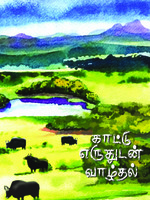 Living with Gaur_Tamil
Living with Gaur_Tamil
-
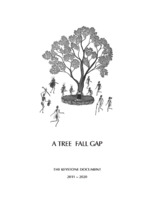 Tree Fall Gap_(Organizational Structure)
Tree Fall Gap_(Organizational Structure) The document outlines the mission and organizational structure of the Keystone Foundation, which focuses on eco-development initiatives in the Nilgiri Biosphere Reserve, engaging with indigenous communities to enhance their livelihoods and environmental sustainability. Established in 1993, the foundation has developed various programs centered on natural resource management, organic farming, and cultural preservation, while promoting fair trade and community-based enterprises. It emphasizes participatory approaches, interdisciplinary collaboration, and the importance of indigenous knowledge, aiming to empower local populations and influence policy for better governance. The document also highlights the foundation's partnerships, achievements, and future goals, including the establishment of a producer company to further support local economies.
-
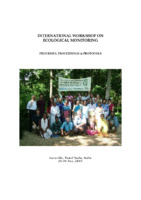 Ecological Monitoring Workshop_Auroville_Nov_05
Ecological Monitoring Workshop_Auroville_Nov_05 The document discusses the Soligas, an indigenous tribal community residing in the Biligiri Rangan Hills (BRT), who traditionally engaged in hunting, cultivation, and the collection of non-timber forest products (NTFPs). With the establishment of the BRT as a wildlife sanctuary, the Soligas retained exclusive rights to extract NTFPs through a cooperative called LAMPS. The document highlights sustainable harvesting practices for various tree species, emphasizing the importance of proper techniques to prevent over-exploitation and ensure the longevity of resources. It also addresses the economic contributions of lichen collection to the Soligas' income and suggests community-based monitoring protocols to enhance sustainable practices. Additionally, it touches on the ecological implications of harvesting methods and the need for adaptive management strategies to balance resource use with conservation efforts.
-
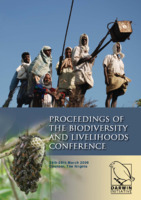 Book on proceedings of the biodiversity and livelihoods conference_ march 2009
Book on proceedings of the biodiversity and livelihoods conference_ march 2009
-
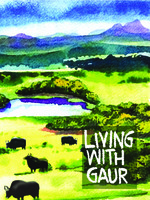 Living with Gaur
Living with Gaur
-
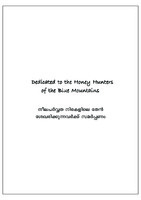 Keystone Handbook on Honey Hunting
Keystone Handbook on Honey Hunting
-
 Adivasis and Livelihoods
Adivasis and Livelihoods
-
 Land And Adivasis
Land And Adivasis
-
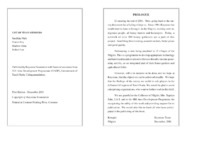 Honey Hunters and Bee Keepers of Tamilnadu
Honey Hunters and Bee Keepers of Tamilnadu
-
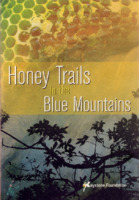 Honey Trails in the Blue Mountains
Honey Trails in the Blue Mountains
-
 Protocols for Harvest
Protocols for Harvest This resource pack emphasizes sustainable harvesting practices for Non-Timber Forest Products (NTFPs) to balance conservation and livelihoods. It provides guidelines and methodologies for community-based ecological monitoring, incorporating ecological parameters, indigenous knowledge, and traditional practices.
-
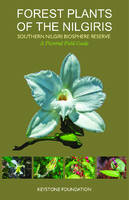 Forest plants of the Nilgiri's_Southern Nilgiri
Forest plants of the Nilgiri's_Southern Nilgiri The Forest plants of The Nilgiris_SouthrenNilgiri provides an overview of the Pillur Valley, located in the Nilgiris Biosphere Reserve, highlighting its diverse ecosystems, including dry deciduous forests, riparian forests, and grasslands, along with their unique plant species. It emphasizes the importance of wild edible tubers, rhizomes, and young shoots in the diets of indigenous communities, particularly the Irula people, who possess traditional knowledge about harvesting these resources sustainably. The document also acknowledges contributions from various individuals and organizations in ecological monitoring and expresses concern over the declining knowledge of plant uses among younger generations. Additionally, it aims to document and preserve local ecological knowledge while promoting awareness of the region's rich biodiversity and the need for its conservation.
-
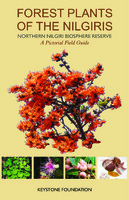 Forest plants of the Nilgiri's _ Northern Nilgiri
Forest plants of the Nilgiri's _ Northern Nilgiri The southern part of the Nilgiri Biosphere Reserve has a wide variation of flora ranging from the dry deciduous, riparian forest and grassland. The third in a five part series, this field guide covers the dominant plants of this zone.
-
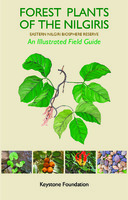 Forest plants of the Nilgiri's _ Eastern Nilgiri
Forest plants of the Nilgiri's _ Eastern Nilgiri The book contains primary work with adivasis or indigenous people of Nilgiris Eastern Slopes, the Kurumbas and the Irulas, especially those who have a special affinity to the forest. Years of work in the forests of the Nilgiris, vividly conveyed the high diversity of this region.
 Forest Plants of the Nilgiris- North eastern Nilgiri Biosphere Reserve The North Eastern part of the Nilgiri Biosphere Reserve(NBR), has a wide variation of flora ranging from the dry decides, riparian forest and grassland. the fourth in a part of series, this field guide covers the dominant plants of this zone.
Forest Plants of the Nilgiris- North eastern Nilgiri Biosphere Reserve The North Eastern part of the Nilgiri Biosphere Reserve(NBR), has a wide variation of flora ranging from the dry decides, riparian forest and grassland. the fourth in a part of series, this field guide covers the dominant plants of this zone. Wild food Kanada Book_Sholiga janavana aahara This booklet, fourth in the series, documents the indigenous knowledge of the sholiga communities in the Nilgiri Biosphere Reserve. This book is about food from the forest.
Wild food Kanada Book_Sholiga janavana aahara This booklet, fourth in the series, documents the indigenous knowledge of the sholiga communities in the Nilgiri Biosphere Reserve. This book is about food from the forest. Irula Wild food-pillur book final with Index This booklet, the third in the series , documents the indigenous knowledge of communities in the Nilgiri Biosphere Reserve. The current publication contains the wild food plants of the Irula of the Pillur region.
Irula Wild food-pillur book final with Index This booklet, the third in the series , documents the indigenous knowledge of communities in the Nilgiri Biosphere Reserve. The current publication contains the wild food plants of the Irula of the Pillur region. Beyond forest boundaries_final version_nov2021 The document presents a series of narratives about human encounters with wildlife in a village setting. It recounts various incidents, such as a family dealing with a sloth bear that intrudes into their home, a girl encountering gaurs while heading to a temple, and a community's fascination with a rare black monkey known as the Nilgiri Langur. Other stories include a woman facing wild boars attracted by garbage, a man rescuing an injured leopard, and a farmer struggling with mongooses stealing her chickens. These tales highlight the challenges and interactions between humans and wild animals, emphasizing the need for coexistence and understanding of wildlife behavior in rural areas. A collection of short stories of people and wildlife.
Beyond forest boundaries_final version_nov2021 The document presents a series of narratives about human encounters with wildlife in a village setting. It recounts various incidents, such as a family dealing with a sloth bear that intrudes into their home, a girl encountering gaurs while heading to a temple, and a community's fascination with a rare black monkey known as the Nilgiri Langur. Other stories include a woman facing wild boars attracted by garbage, a man rescuing an injured leopard, and a farmer struggling with mongooses stealing her chickens. These tales highlight the challenges and interactions between humans and wild animals, emphasizing the need for coexistence and understanding of wildlife behavior in rural areas. A collection of short stories of people and wildlife. Living with Gaur_Tamil
Living with Gaur_Tamil
 Tree Fall Gap_(Organizational Structure) The document outlines the mission and organizational structure of the Keystone Foundation, which focuses on eco-development initiatives in the Nilgiri Biosphere Reserve, engaging with indigenous communities to enhance their livelihoods and environmental sustainability. Established in 1993, the foundation has developed various programs centered on natural resource management, organic farming, and cultural preservation, while promoting fair trade and community-based enterprises. It emphasizes participatory approaches, interdisciplinary collaboration, and the importance of indigenous knowledge, aiming to empower local populations and influence policy for better governance. The document also highlights the foundation's partnerships, achievements, and future goals, including the establishment of a producer company to further support local economies.
Tree Fall Gap_(Organizational Structure) The document outlines the mission and organizational structure of the Keystone Foundation, which focuses on eco-development initiatives in the Nilgiri Biosphere Reserve, engaging with indigenous communities to enhance their livelihoods and environmental sustainability. Established in 1993, the foundation has developed various programs centered on natural resource management, organic farming, and cultural preservation, while promoting fair trade and community-based enterprises. It emphasizes participatory approaches, interdisciplinary collaboration, and the importance of indigenous knowledge, aiming to empower local populations and influence policy for better governance. The document also highlights the foundation's partnerships, achievements, and future goals, including the establishment of a producer company to further support local economies. Ecological Monitoring Workshop_Auroville_Nov_05 The document discusses the Soligas, an indigenous tribal community residing in the Biligiri Rangan Hills (BRT), who traditionally engaged in hunting, cultivation, and the collection of non-timber forest products (NTFPs). With the establishment of the BRT as a wildlife sanctuary, the Soligas retained exclusive rights to extract NTFPs through a cooperative called LAMPS. The document highlights sustainable harvesting practices for various tree species, emphasizing the importance of proper techniques to prevent over-exploitation and ensure the longevity of resources. It also addresses the economic contributions of lichen collection to the Soligas' income and suggests community-based monitoring protocols to enhance sustainable practices. Additionally, it touches on the ecological implications of harvesting methods and the need for adaptive management strategies to balance resource use with conservation efforts.
Ecological Monitoring Workshop_Auroville_Nov_05 The document discusses the Soligas, an indigenous tribal community residing in the Biligiri Rangan Hills (BRT), who traditionally engaged in hunting, cultivation, and the collection of non-timber forest products (NTFPs). With the establishment of the BRT as a wildlife sanctuary, the Soligas retained exclusive rights to extract NTFPs through a cooperative called LAMPS. The document highlights sustainable harvesting practices for various tree species, emphasizing the importance of proper techniques to prevent over-exploitation and ensure the longevity of resources. It also addresses the economic contributions of lichen collection to the Soligas' income and suggests community-based monitoring protocols to enhance sustainable practices. Additionally, it touches on the ecological implications of harvesting methods and the need for adaptive management strategies to balance resource use with conservation efforts. Book on proceedings of the biodiversity and livelihoods conference_ march 2009
Book on proceedings of the biodiversity and livelihoods conference_ march 2009
 Living with Gaur
Living with Gaur
 Keystone Handbook on Honey Hunting
Keystone Handbook on Honey Hunting
 Adivasis and Livelihoods
Adivasis and Livelihoods
 Land And Adivasis
Land And Adivasis
 Honey Hunters and Bee Keepers of Tamilnadu
Honey Hunters and Bee Keepers of Tamilnadu
 Honey Trails in the Blue Mountains
Honey Trails in the Blue Mountains
 Protocols for Harvest This resource pack emphasizes sustainable harvesting practices for Non-Timber Forest Products (NTFPs) to balance conservation and livelihoods. It provides guidelines and methodologies for community-based ecological monitoring, incorporating ecological parameters, indigenous knowledge, and traditional practices.
Protocols for Harvest This resource pack emphasizes sustainable harvesting practices for Non-Timber Forest Products (NTFPs) to balance conservation and livelihoods. It provides guidelines and methodologies for community-based ecological monitoring, incorporating ecological parameters, indigenous knowledge, and traditional practices. Forest plants of the Nilgiri's_Southern Nilgiri The Forest plants of The Nilgiris_SouthrenNilgiri provides an overview of the Pillur Valley, located in the Nilgiris Biosphere Reserve, highlighting its diverse ecosystems, including dry deciduous forests, riparian forests, and grasslands, along with their unique plant species. It emphasizes the importance of wild edible tubers, rhizomes, and young shoots in the diets of indigenous communities, particularly the Irula people, who possess traditional knowledge about harvesting these resources sustainably. The document also acknowledges contributions from various individuals and organizations in ecological monitoring and expresses concern over the declining knowledge of plant uses among younger generations. Additionally, it aims to document and preserve local ecological knowledge while promoting awareness of the region's rich biodiversity and the need for its conservation.
Forest plants of the Nilgiri's_Southern Nilgiri The Forest plants of The Nilgiris_SouthrenNilgiri provides an overview of the Pillur Valley, located in the Nilgiris Biosphere Reserve, highlighting its diverse ecosystems, including dry deciduous forests, riparian forests, and grasslands, along with their unique plant species. It emphasizes the importance of wild edible tubers, rhizomes, and young shoots in the diets of indigenous communities, particularly the Irula people, who possess traditional knowledge about harvesting these resources sustainably. The document also acknowledges contributions from various individuals and organizations in ecological monitoring and expresses concern over the declining knowledge of plant uses among younger generations. Additionally, it aims to document and preserve local ecological knowledge while promoting awareness of the region's rich biodiversity and the need for its conservation. Forest plants of the Nilgiri's _ Northern Nilgiri The southern part of the Nilgiri Biosphere Reserve has a wide variation of flora ranging from the dry deciduous, riparian forest and grassland. The third in a five part series, this field guide covers the dominant plants of this zone.
Forest plants of the Nilgiri's _ Northern Nilgiri The southern part of the Nilgiri Biosphere Reserve has a wide variation of flora ranging from the dry deciduous, riparian forest and grassland. The third in a five part series, this field guide covers the dominant plants of this zone. Forest plants of the Nilgiri's _ Eastern Nilgiri The book contains primary work with adivasis or indigenous people of Nilgiris Eastern Slopes, the Kurumbas and the Irulas, especially those who have a special affinity to the forest. Years of work in the forests of the Nilgiris, vividly conveyed the high diversity of this region.
Forest plants of the Nilgiri's _ Eastern Nilgiri The book contains primary work with adivasis or indigenous people of Nilgiris Eastern Slopes, the Kurumbas and the Irulas, especially those who have a special affinity to the forest. Years of work in the forests of the Nilgiris, vividly conveyed the high diversity of this region.
